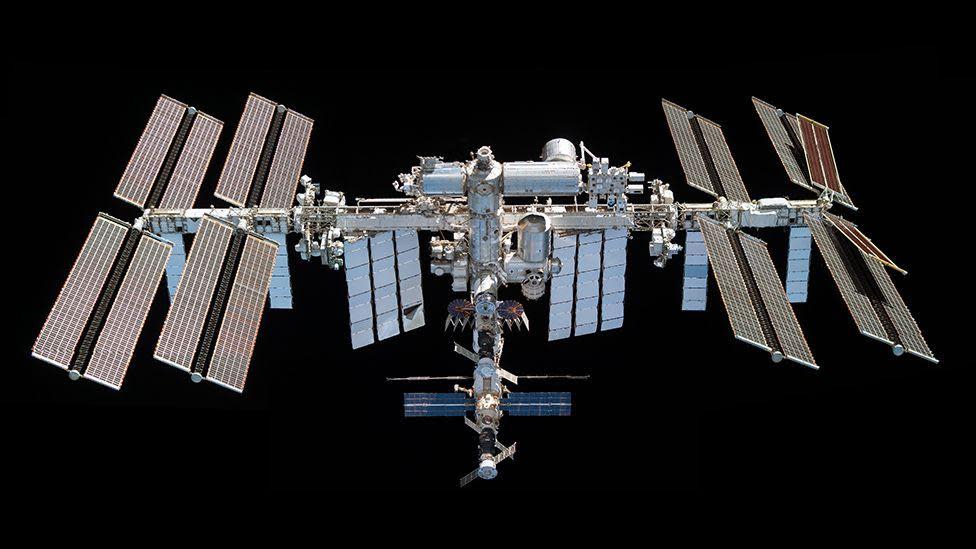Musk's SpaceX hired to destroy ISS space station

Nasa has selected Elon Musk's SpaceX company to bring down the International Space Station at the end of its life.
The California-based company will build a vehicle capable of pushing the 430-tonne orbiting platform into the Pacific Ocean early in the next decade.
A contract for the work, valued at up to $843m (£668m), was announced on Wednesday.
The first elements of the space station were launched in 1998, with continuous crewed operations beginning in 2000.
The station circles the Earth every 90 minutes at an altitude just above 400km (250 miles) and has been home to thousands of scientific experiments, investigating all manner of phenomena from the aging process in humans to the formula for new types of materials.
Engineers say the laboratory remains structurally sound, but plans need to be put in place now for its eventual disposal. Without assistance, it would eventually fall back to Earth on its own, however this poses a significant risk to populations on the ground.
"Selecting a US De-orbit Vehicle for the International Space Station (ISS) will help Nasa and its international partners ensure a safe and responsible transition in low Earth orbit at the end of station operations. This decision also supports Nasa's plans for future commercial destinations and allows for the continued use of space near Earth," Ken Bowersox, the agency's director of space operations, said in a statement.
The US and Russia lead the ISS project. Europe, Canada and Japan play supporting roles. The western partners have all agreed to fund the station through 2030; Russia says its involvement will extend until at least 2028.

Nasa has studied various options for end-of-life disposal.
These include disassembling the station and using the younger elements in a next-generation platform. Another idea has been to simply to hand it off to some commercial concern to run and maintain.
But these solutions all have varying complications of complexity and cost, as well as the legal difficulty of having to untangle issues of ownership.
Neither Nasa nor SpaceX have released details of the design for the de-orbiting "tug boat", but it will require considerable thrust to safely guide the station into the atmosphere in the right place and at the right time.
The platform's great mass and extent - the dimensions roughly of a football pitch - mean some structures and components are bound to survive the heat of re-entry and make it all the way to the surface.
Controllers will allow the orbit of the ISS to naturally decay over a period of time, and after removing the last crew will command the tugboat to execute the final de-orbit manoeuvre.
Redundant spacecraft are aimed at a remote location in the Pacific known as Point Nemo.
Named after the famous submarine sailor from Jules Verne's book 20,000 Leagues Under the Sea, the target graveyard is more than 2,500km from the nearest piece of land.
Nasa is hopeful that a number of private consortia will have started launching commercial space stations by the time the ISS is brought out of the sky.
The focus of the space agencies will shift to a project to build a platform called Gateway that will orbit the Moon.


